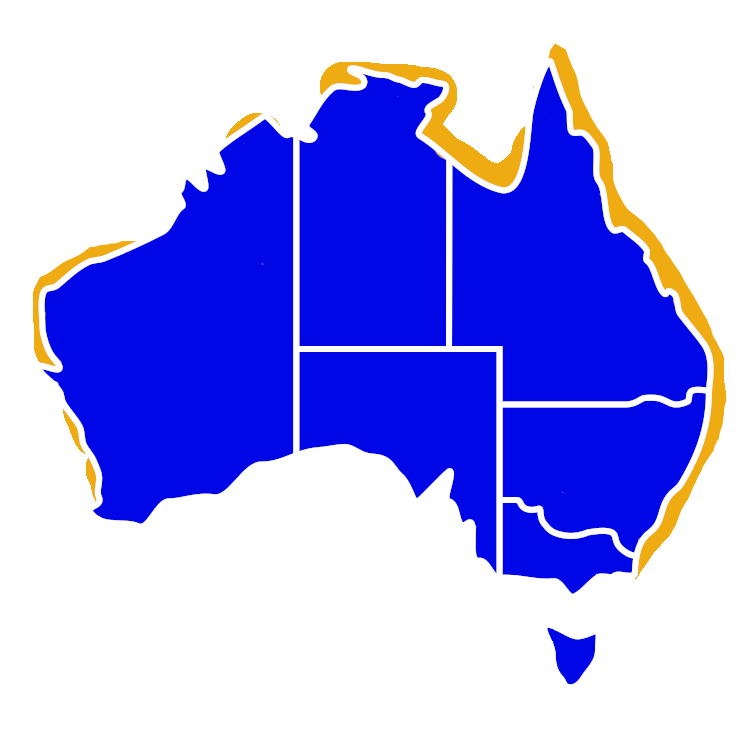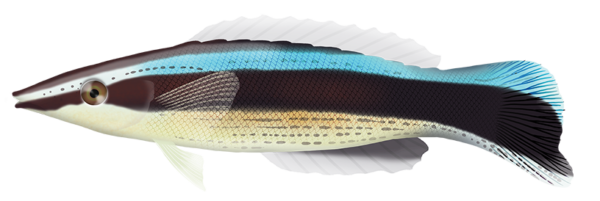Quick Facts
Distribution

Interesting Info
- The common cleanerfish is found in the waters of the Great Barrier Reef and other coral reefs in northern Australia. Their range include Western Australia around to Victoria.
- They have a distinctive blue and black coloration, with a bright blue head that fades to black towards the tail. They have a slender, elongated body that is typically around 8-10 cm in length, with a pointed snout and a small mouth. The scales of the common cleanerfish are small and embedded in their skin, giving them a smooth, streamlined appearance.
- The common cleanerfish feeds on the parasites, dead skin, and other debris on the bodies of other fish, helping to keep them healthy. Research has shown that cleanerfish can reduce the incidence of parasites on other fish by up to 80%.
- In addition to their cleaning role, common cleanerfish are also known to feed on small invertebrates, such as crustaceans and molluscs.
- The common cleanerfish is a social species, and individuals will often form groups that work together to clean other fish. These fish are also known to engage in a behaviour called “tidal dancing”, where they swim in unison with the tidal currents.
- They communicate with each other through a variety of body postures and movements, such as shaking their bodies or opening and closing their mouths.
- Breeding season occurs in the summer months. During this time, male cleanerfish may display courtship behaviour towards females, such as swimming in a zigzag pattern and flaring their fins. Females will then select a mate and lay eggs in a nest constructed by the male. After the eggs hatch, the male will protect the young until they are able to swim and feed on their own.
- Estimated lifespan is up to 8 years.
Species Interaction
Aquarium, Snorkeling & Diving
Common cleanerfish can make interesting and useful aquarium fish for some aquarists. They are known to be peaceful and can coexist with a wide variety of other fish species, making them a good choice for community aquariums. They are a popular and fascinating fish to observe for snorkelers and divers. As their name suggests, they are known for their unique cleaning behaviour, in which they remove parasites and dead skin from the bodies of other fish.
Scientific Classification
Kingdom: Animalia
Phylum: Chordata
Class: Actinopterygii
Order: Perciformes
Family: Labridae
Genus: Labroides
Species: Labroides Dimidiatus
Conservation Status
The conservation status of common cleanerfish in Australia is currently listed as “Least Concern” by the International Union for Conservation of Nature (IUCN). This means that the species is not considered to be at significant risk of extinction in Australia at present.
Common Cleanerfish
As Aquarium Fish
Care Level: Moderate to difficult
Temperament: Peaceful
Diet: Carnivore
Reef Compatible: Yes
Minimum Tank Size: 80 gallons
Recreational Viewing
- Snorkeling & Scuba
Finding: Easy
Temperament: Peaceful
Location: Inner Reef, Outer Reef, Lagoon
Danger: None





